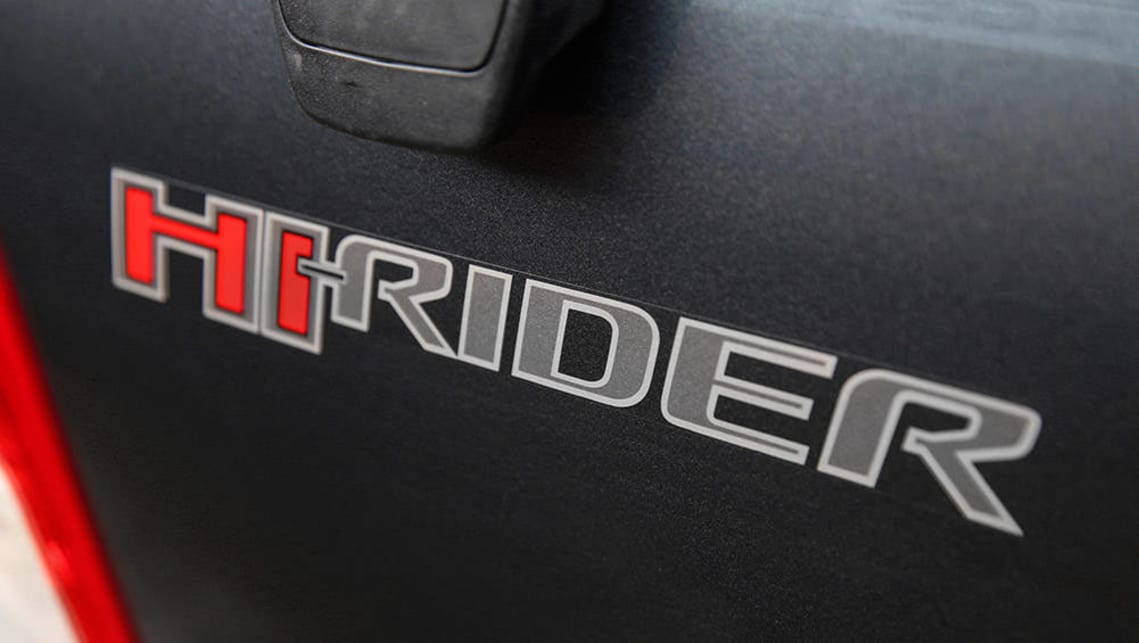
4x4 or 4x2 high rider ute | which is best for me?
- Ford Ranger
- Toyota HiLux
- Isuzu D-Max
- Mazda BT-50
- Ford Commercial Range
- Ford Ute Range
- Isuzu Commercial Range
- Isuzu Ute Range
- Mazda Commercial Range
- Mazda Ute Range
- Toyota Commercial Range
- Toyota Ute Range
- Commercial
- Ute
- Ford Ranger Reviews
- Toyota HiLux Reviews
- Isuzu D-Max Reviews
- Mazda BT-50 Reviews
- Ford
- Isuzu
- Mazda
- Toyota
- Tradie Advice
- Ford Advice
- Isuzu Advice
- Mazda Advice
- Toyota Advice
- Buying tips
- Off road
- Towing
- Tradies
- Tradie

A lot of urban 4x4 ute owners rarely venture further off the bitumen than the dirt shoulder or their gravel driveway. So although they rarely - if ever - engage its 4x4 drivetrain, they pay a lot of extra money for the privilege of lugging it around.
Four-wheel drive or 4x4 utes not only cost a lot more to buy than their two-wheel drive or 4x2 siblings but they are also heavier and therefore have higher running costs, which during a typical ownership spanning several years can add up to a big chunk of change.
That's why several manufacturers are now offering high-riding versions of their 4x2 utes. The terms 'High-Ride' or 'Hi-Rider' simply mean that they share the same ride height and rugged off-road appearance of their 4x4 equivalents. They are almost identical - but without the added weight and complexity of a second drivetrain for the front wheels.
So you get the same commanding driving position and rugged all-round practicality of a 4x4 ute, with the benefits of a much lower upfront price, excellent rough road performance and good towing capacity. And less weight, resulting in a larger payload and better fuel economy. So if you're thinking that a 4x2 High Ride ute ticks all your boxes, here's a few things to consider:
Purchase price
You'll save money - and the biggest saving occurs the moment you buy it. For example, let's say you were interested in the latest 2016 Toyota Hilux in the top-shelf SR5 spec with 2.8 litre diesel and six-speed manual. The Double-Cab pick-up 4x4 currently starts at $59,010 drive-away but its high-riding 4x2 sibling kicks in at only $44,562. That's a saving of more than 32 percent - or a whopping $14,000.
A 4x2 High-Ride ute will make light work of the roughest work sites, back roads and bush tracks
Or how about the latest 2016 PXII Ford Ranger in XLT spec, with the 3.2 litre diesel and six-speed manual. The Double-Cab pick-up 4x4 starts at $58,953 drive-away but its 4x2 ‘Hi-Rider' equivalent starts at only $50, 804. That's an upfront saving of more than $8,000. Similar savings can also be found with other high-riding 4x2s, like the Mazda BT-50 and Isuzu D-Max. That's serious saving.
Off road performance
With its 4x4 ride height, ground clearance and wheel travel, a 4x2 High-Ride ute will make light work of the roughest work sites, back roads and bush tracks you're likely to encounter and will take you further than any sedan or two-wheel drive soft roader.
Some high-riding 4x2 utes, like the PXII Ford Ranger, come with an electronic locking differential which greatly increases off-road capability. Why? A conventional 'open' diff can easily get you stuck in the rough, because when one driven wheel loses grip and starts to spin, all the power goes to that spinning wheel. With a fully locked diff, though, the two driven rear wheels are in effect connected by a solid axle, just like a go-kart. So that if one wheel comes off the ground, the other one just keeps powering along, which in most cases, with some thoughtful wheel placement, can drive you out of trouble.
Other high-riding 4x2 utes without locking diffs rely on the latest electronic traction control technology, which has made remarkable advances recently. In fact, seasoned 4x4 testers have discovered that some 4x4s now display superior off-road performance when relying purely on traction control, with their locking rear diffs disengaged.
Towing
Some High-Ride 4x2 utes have the same towing capacities as their 4x4 cousins but others don't. For instance, our PXII Ford Ranger 4x2 Hi-Rider example has the same maximum braked towing capacity as its 4x4 sibling (3500 kg).
If towing is an important, make sure that a high-riding 4x2 has the towing capacity to meet your needs
However the latest Toyota Hilux 4x2 Hi-Rider has a significant reduction of 700 kg in maximum braked towing capacity compared to its 4x4 equivalent (2800 kg vs 3500 kg). In the Isuzu D-Max, the disparity between 4x2 and 4x4 is even greater (2500 kg vs 3500 kg) or a full tonne less.
So if towing is an important part of your vehicle use for work or leisure, make sure that a high-riding 4x2 has the towing capacity to meet your needs.
Lighter weight = less fuel + higher payload
Losing the extra flab of a 4x4 transmission and extra diff and axles generally results in a reduction of around 100-150 kg in the kerb weights of high-riding 4x2 utes compared to their 4x4 siblings. That's about 5-8 bags of builder's cement, which is a lot of performance-sapping bulk to be lugging around if you don't need it.
And that weight saving can result in a useful increase in payload by roughly the same amount. Although the Ranger 4x2 Hi-Rider and 4x4 used in our examples share the same GVM of 3200 kg, the 4x2 offers an extra 95 kg of payload in reaching that figure. In the Mazda BT50 models, it's an extra 103 kg. And although the GVM varies for our two Hilux versions, the 4x2 still tops the 4x4's peak payload by 75 kg.
The lighter kerb weight also results in superior fuel economy, although it must be said that great progress has been made in reducing this deficit. For example, where a disparity of up to 1.0 litre/100 km existed between 4x2 Hi-Rider and 4x4 models in the original PX Ranger line, Ford claims that its latest PXII models (manuals) have reduced this to only 0.1 litre/100 km. That's progress.
In the end
If you want the look and ruggedness of a 4x4 ute but don't have a need for its extreme off-road capability, a 4x2 High-Ride is a no-brainer. And just think of all the extra tools, camping equipment or factory accessories you'll be able to buy with all the money saved!










Comments